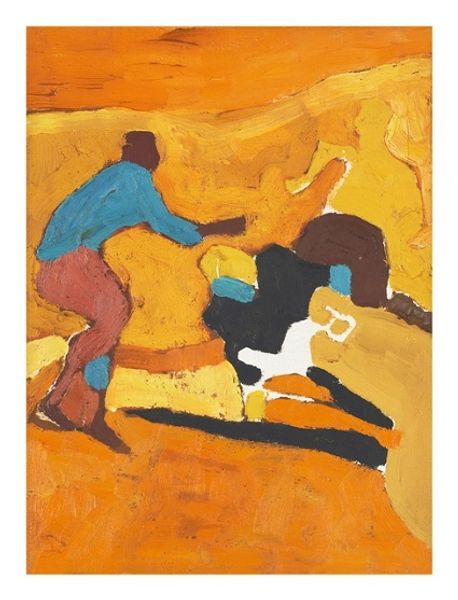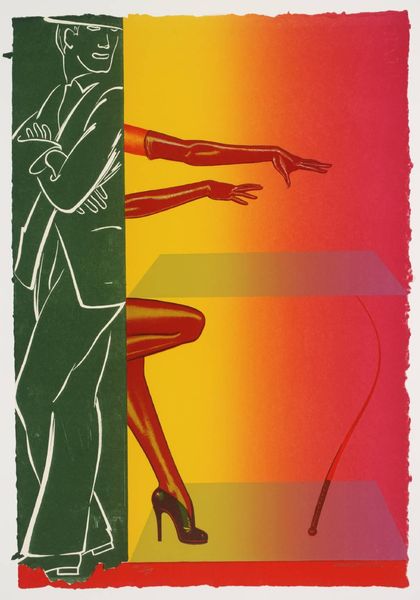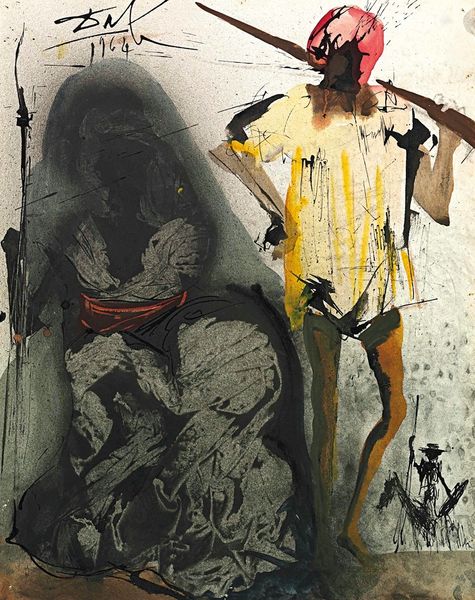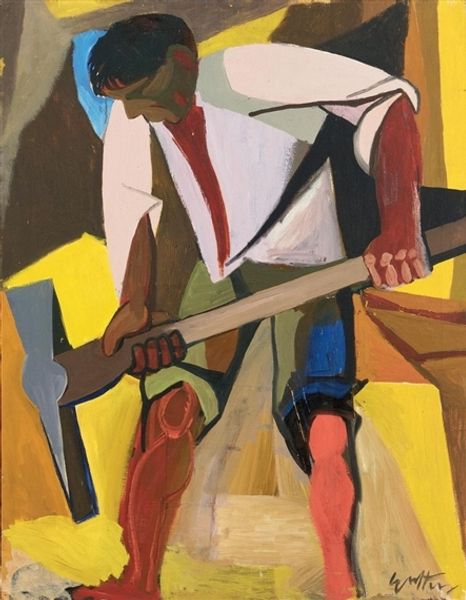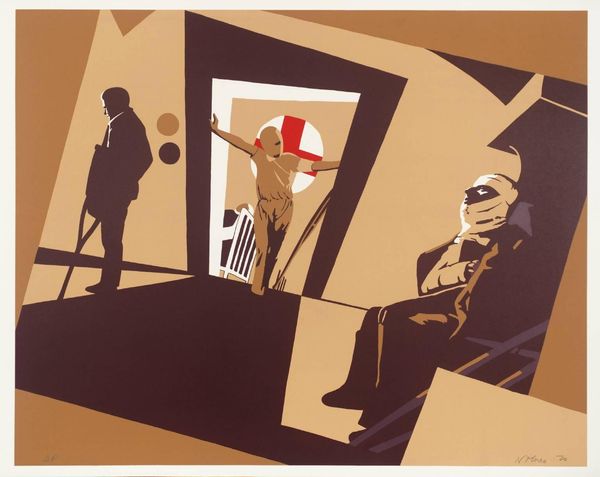
print, graphite
#
portrait
# print
#
caricature
#
caricature
#
figuration
#
social-realism
#
graphite
#
history-painting
#
cartoon style
Dimensions: image: 47 × 32.4 cm (18 1/2 × 12 3/4 in.) sheet: 57.2 × 37.5 cm (22 1/2 × 14 3/4 in.)
Copyright: National Gallery of Art: CC0 1.0
Curator: Harry Sternberg's print, simply titled "Robert Gwathmey," was created in 1944 and uses graphite for its medium. Editor: It hits you with such stark juxtapositions, doesn't it? A flat, almost cartoonish rendering paired with…barbed wire? It creates an instant feeling of unease. Curator: It's definitely designed to provoke. Sternberg was deeply involved in social realism, reflecting the social and political turbulence of his time. Editor: The figure in the background, rendered like an advertisement, a bit smug... the "1944" hovering there almost feels accusatory, pinned behind him on a green background. And then those smaller, almost obscured figures of a black man and woman to the side… Curator: Exactly. The work uses caricature to point a critical eye towards racial inequalities of the Jim Crow South. The larger figure seems to embody a certain... detached authority. Editor: It feels…layered. There are the physical layers of printmaking but also layers of meaning. Is Sternberg implicating Gwathmey specifically or is he using Gwathmey’s art and stature as a more generalized symbol of power and maybe complacency? Curator: It’s complex. It can be seen as critique of the artistic establishment but also a challenge to fellow artists to engage more directly with social issues in their work. Editor: It certainly is challenging. The flat, bold colors alongside such weighted symbols—barbed wire being the most blatant—it doesn’t allow for easy interpretation or comfort. And the ghostly figures almost disappearing into the back, fenced in with splintered wood... Curator: The print acts as a visual statement. A challenge that can serve to confront power and force us to engage with uncomfortable truths about art, society, and race. Editor: It makes me think about the responsibility of representation, especially when tackling difficult themes. I think "Robert Gwathmey" captures a very tense moment in art, trying to push for necessary and, at times, very risky social change.
Comments
No comments
Be the first to comment and join the conversation on the ultimate creative platform.




